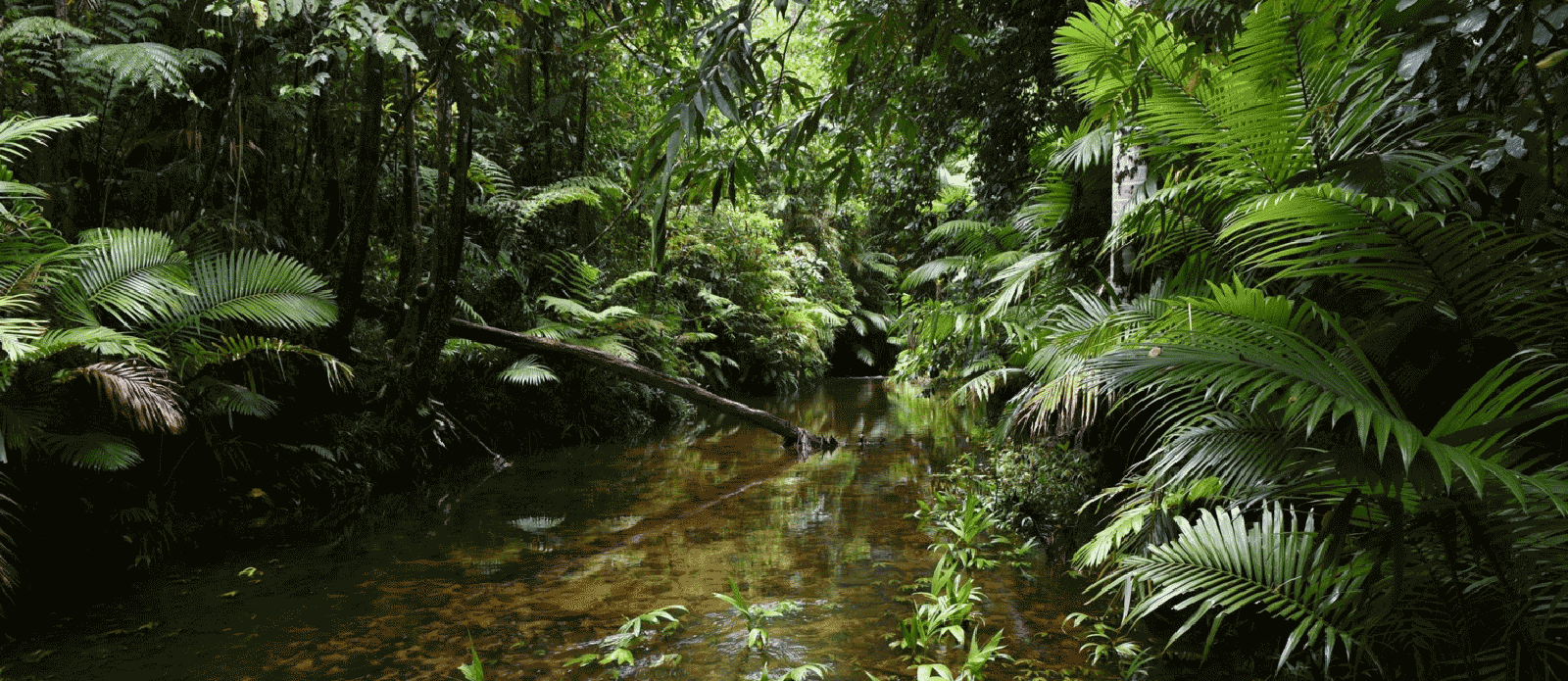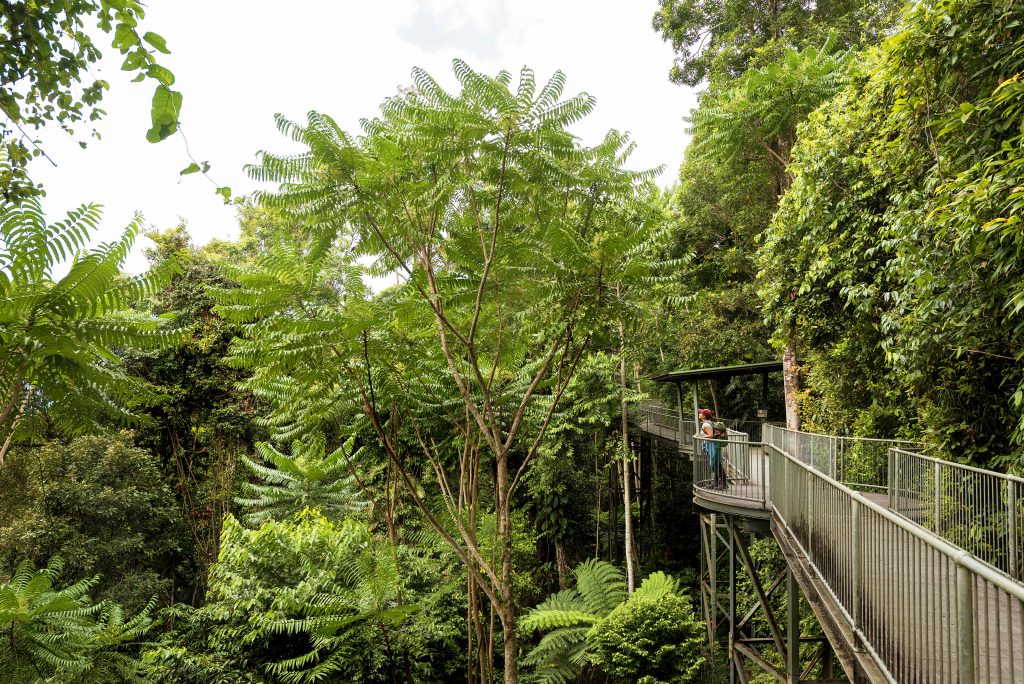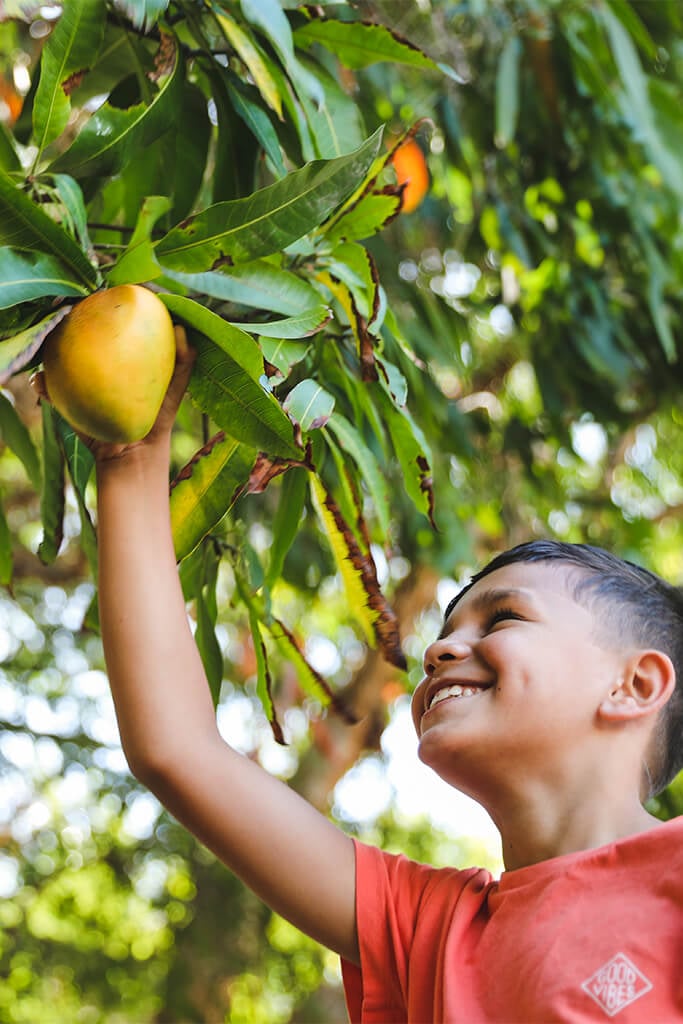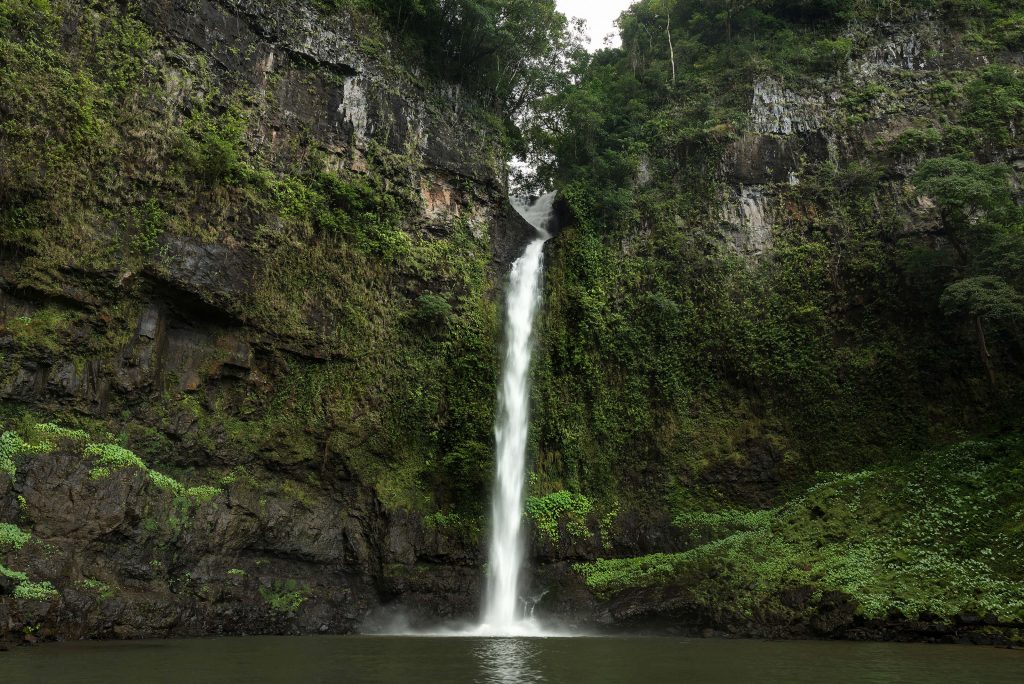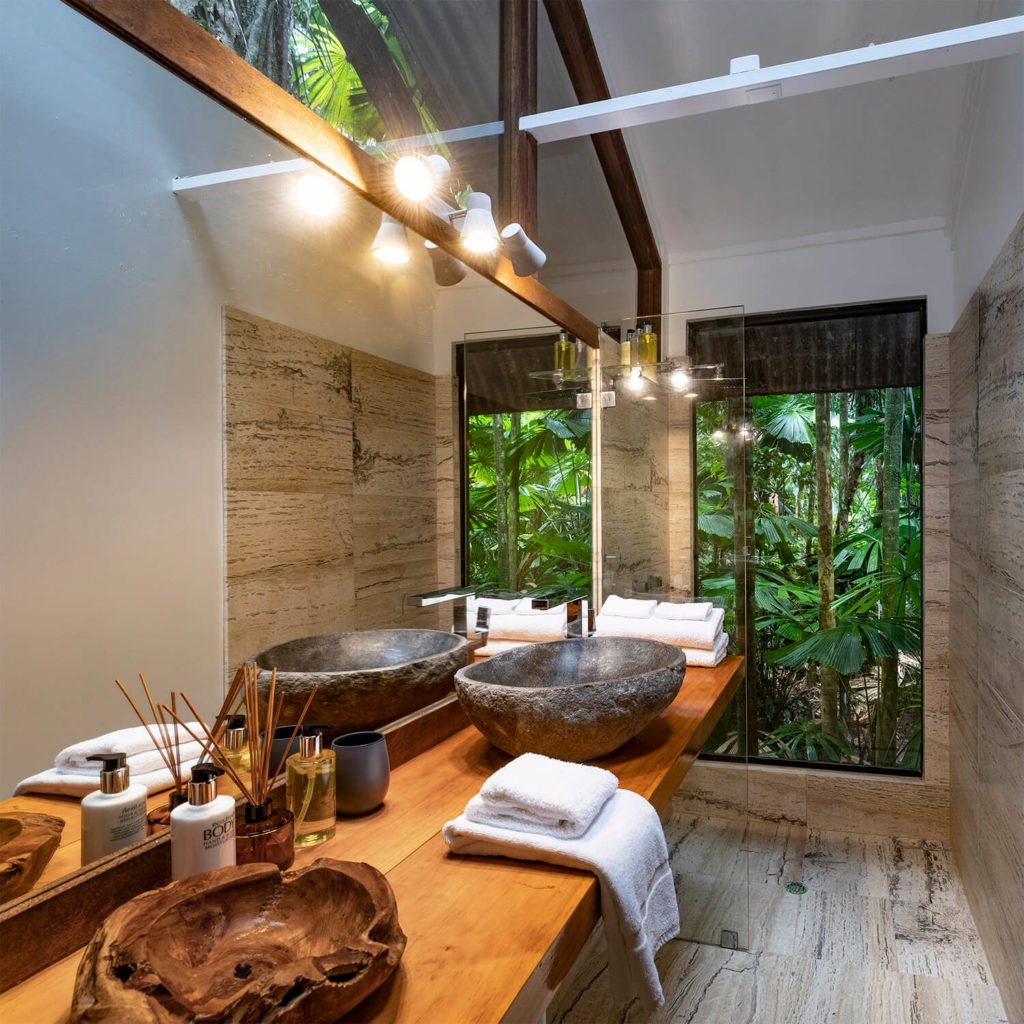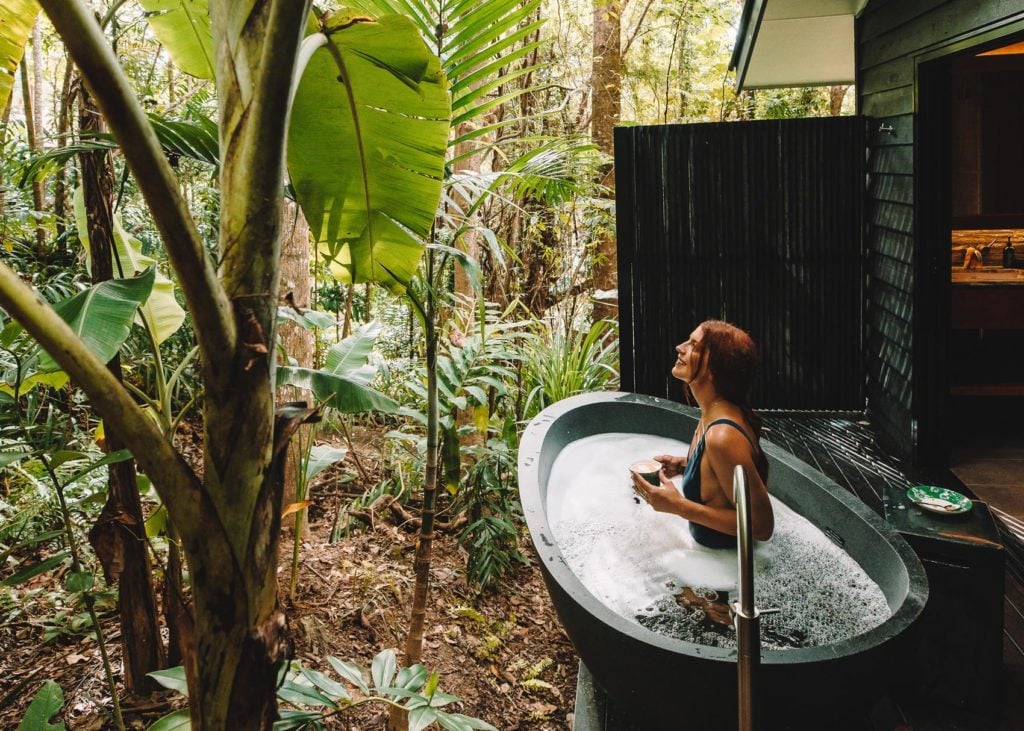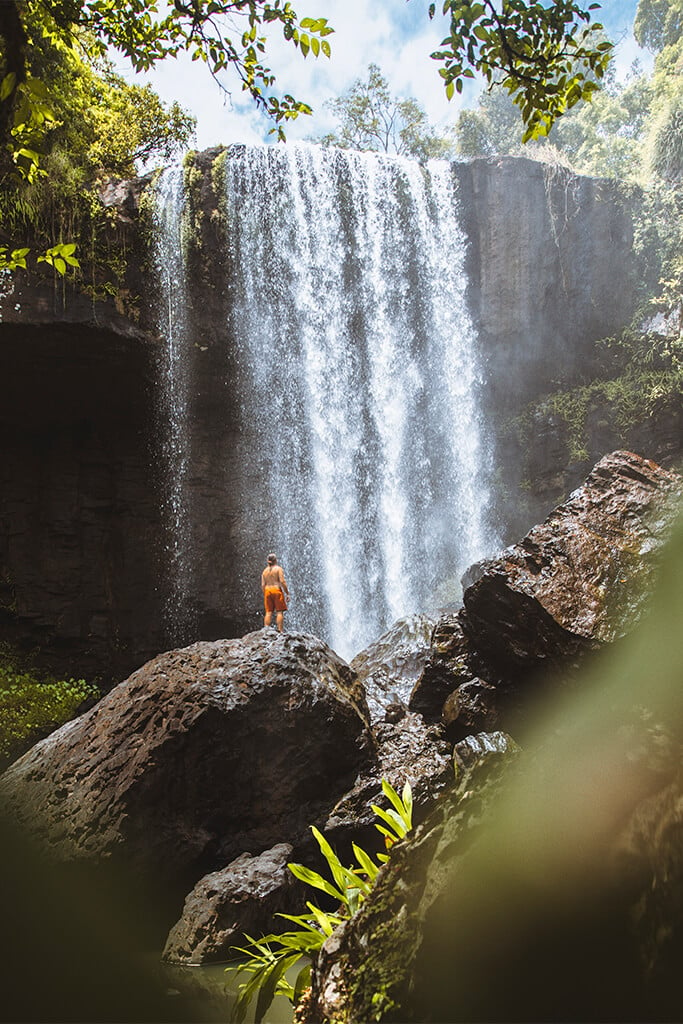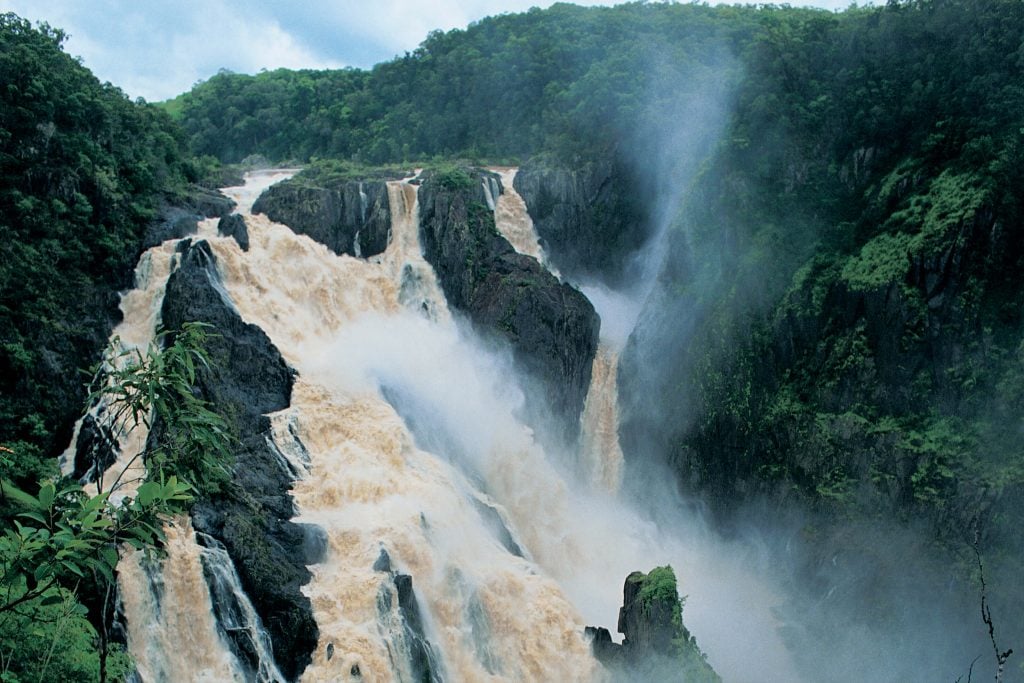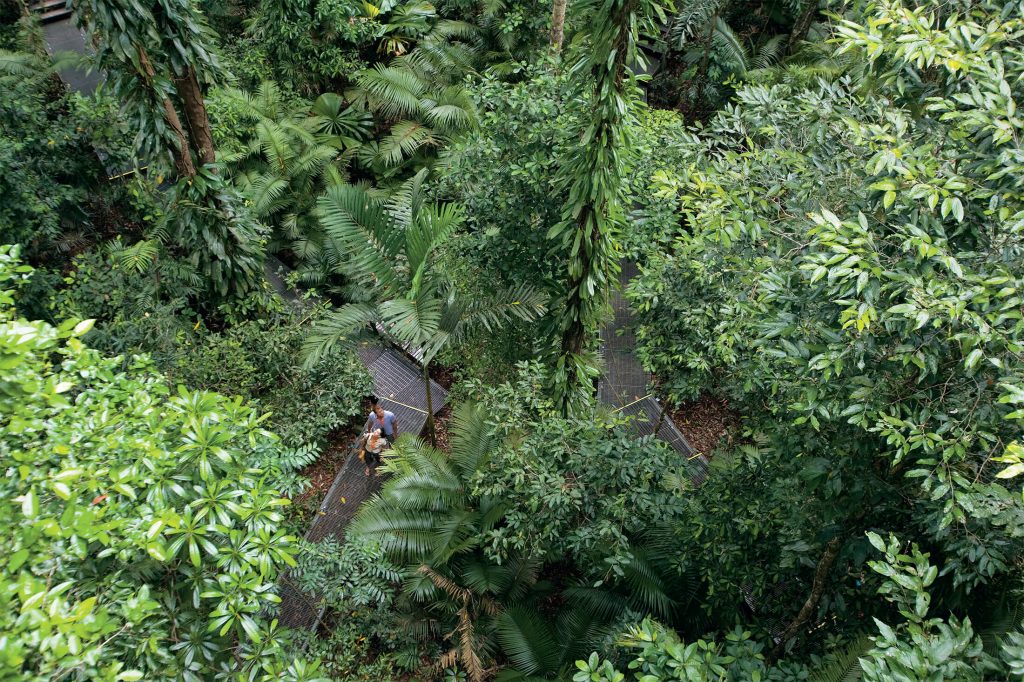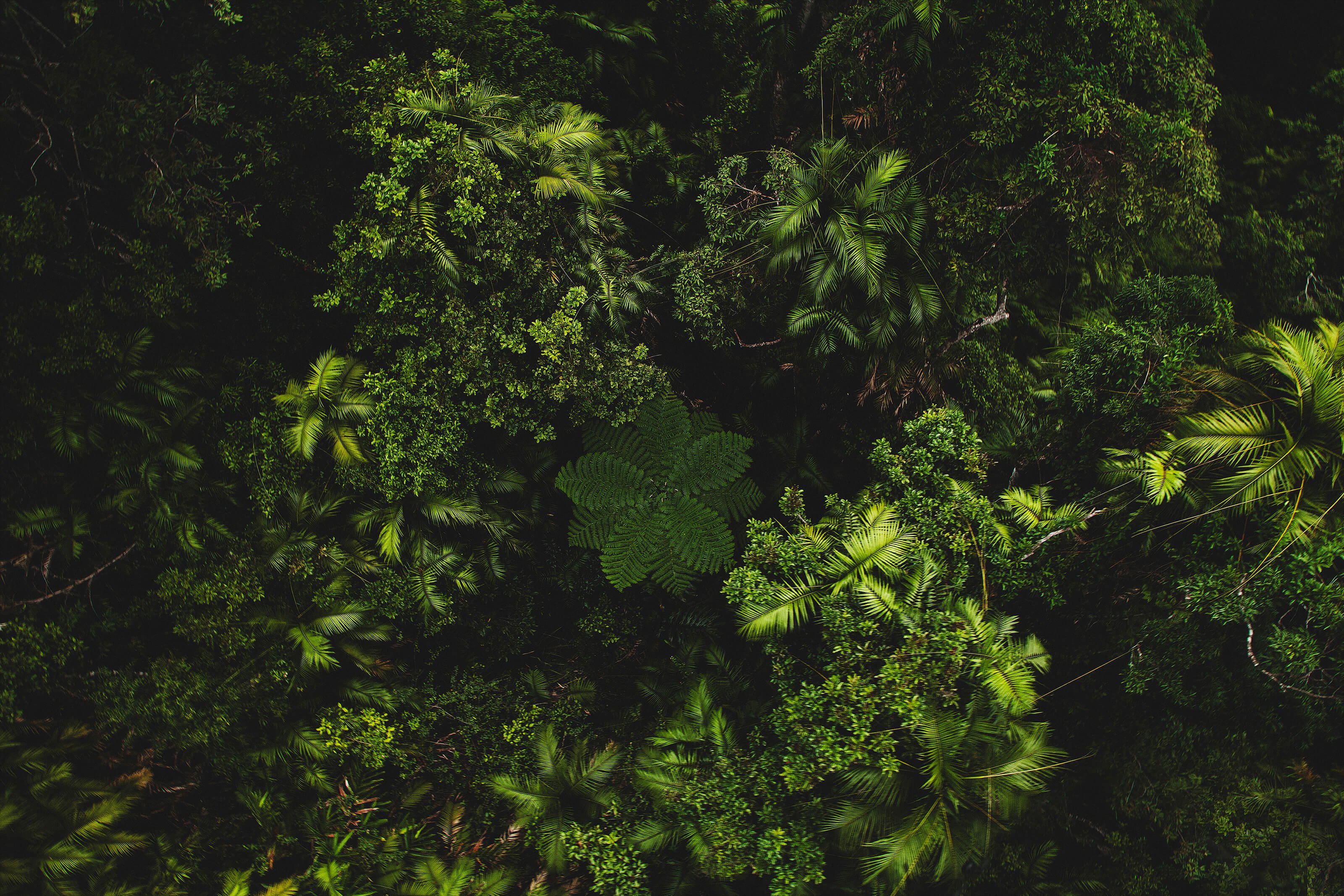TNQ Writer
The creation story of this ancient place isn’t simple, so here’s the abbreviated version of how the rainforest began some 200 million years ago.
Just up the road from Cairns, there’s a rugged looking mountain peak. It’s often shrouded in clouds, and at 1374 meters tall, it’s one of the wettest places on the planet. It happens to be right in the middle of an extraordinary rainforest, and the ancestry of flora and fauna here stretch back hundreds of millions of years. There’s a species of frog that calls the top of this mountain home and can be found nowhere else on the planet, not even neighbouring mountains. Welcome to Thornton’s Peak, just one of the many secrets of the wet tropics waiting to be unlocked.
Home to the largest collection of primitive flowering plants on earth, Australia’s wet tropics rainforest provides such a fragile haven to such a diverse range of living things that they boast a greater biodiversity than the Galapagos Islands. So how does a living museum that’s a whopping 80 million years older than the Amazon come to be? More importantly, how did it survive long enough for us to see and experience it today?
200 million years ago
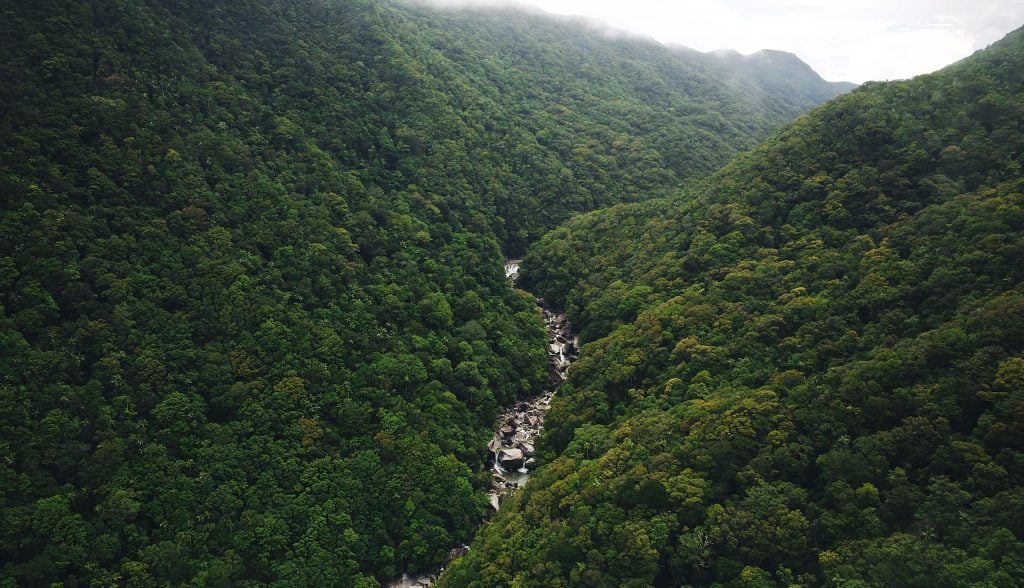
The Wet Tropics Rainforest
The Wet Tropics Rainforest
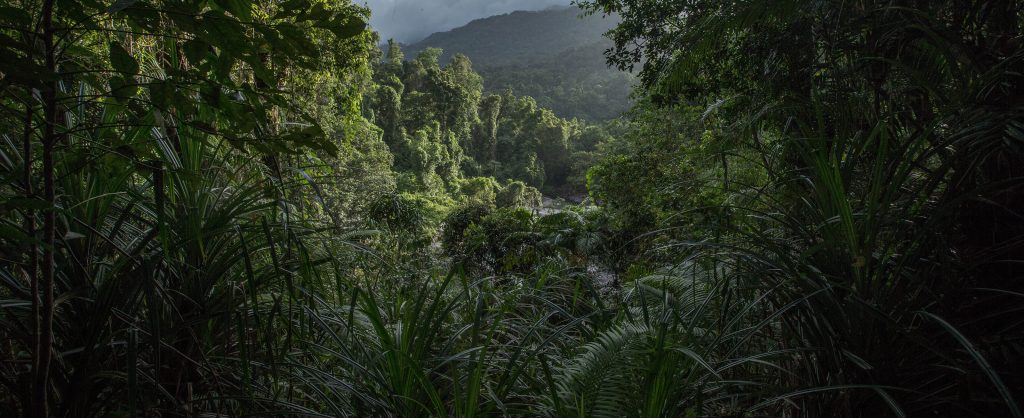
The Wet Tropics Rainforest at Babinda Boulders
The Wet Tropics Rainforest at Babinda Boulders
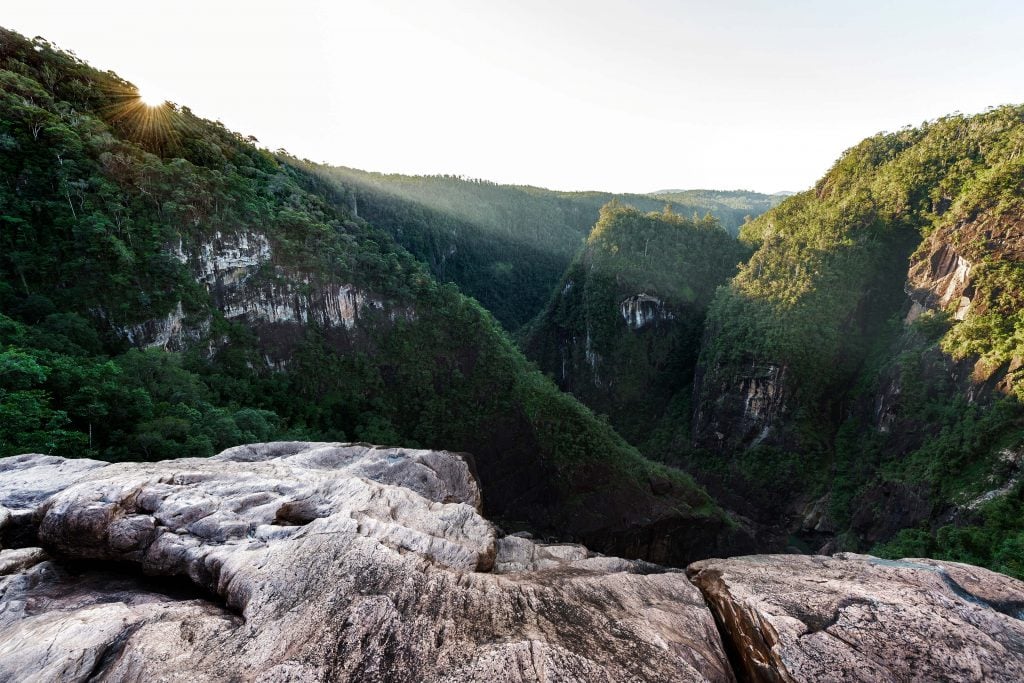
Tully Gorge
Tully Gorge
The 0.26% of the Australian landmass that we call the Wet Tropics today once lived on a single, global supercontinent known as Pangea. About 200 million years ago, for reasons heavily debated, Pangea busted itself up into two chunks known as Eurasia and Gondwana. Gondwana became the continental lifeboat upon which today’s rainforest hitched the first leg in its ride south.
65 million years ago
At this point, the Wet Tropics were home to a thriving population of dinosaurs when a random act of unkindness threw a meteor at the planet so large that 75% of living things on Earth became extinct. Luckily, some dinosaur relatives survived and still roam the wet tropics today in the form of crocodiles, which have wandered the earth as far back as 105 million years ago. You’ll also see the cassowary, and while we can only prove it to be around 30million years, its ancestors were certainly dinosaurs.
45 million years ago
Nothing lasts forever and Australia began to part ways with Gondwana, unzipping first from western Australia 45 million ago and finally tearing away from Tasmania 33 million years ago, while heading north towards the tropics.
Because of Australia’s earlier detour south, it could remain cooler than many other of its ex-continental buddies such as Indonesia and Africa. That’s not hard to imagine when you consider that the wet tropics rainforests were once situated as far south as Hobart is today.
When Australia finally split ways with Antarctica, it was a land almost entirely covered in rainforests. It’s here that the continent decided to exercise its new-found continental independence by moving north as the planet again began to cool. This migration created a unique situation where the earth cooled as we moved to warmer waters, keeping temperatures reasonably constant for a very long period of time. Stability of temperatures allowed scores of animals and plants to evolve in isolation. Ever wondered why Australia had so many odd and unique creatures? Now you have the answer.
A little more recently
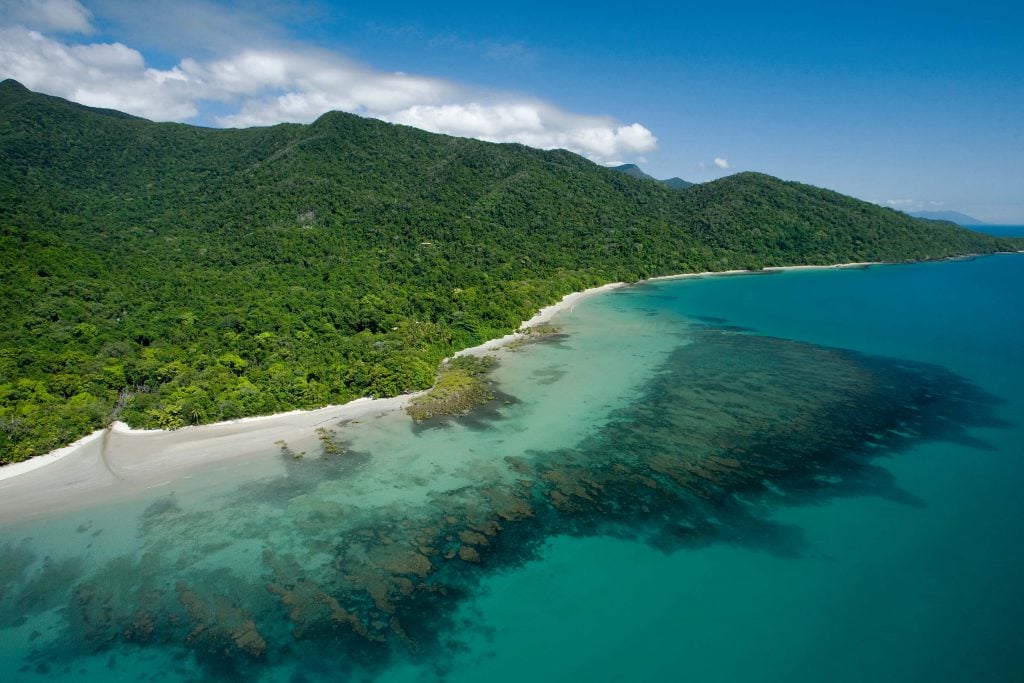
Cape Tribulation, where the rainforest meets the reef
Cape Tribulation, where the rainforest meets the reef
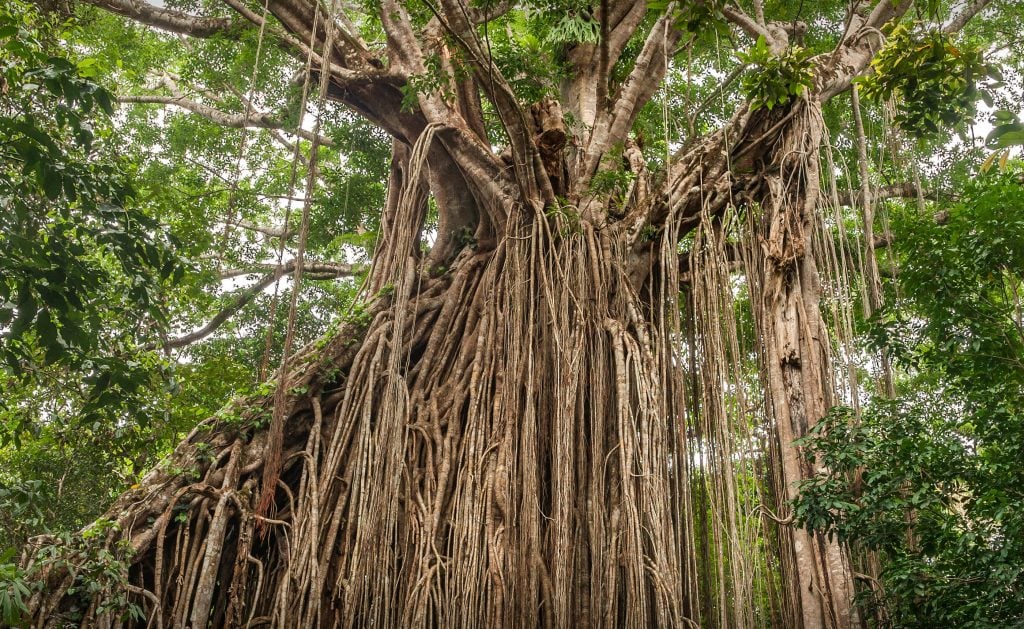
Curtain Fig Tree, Atherton Tablelands
Curtain Fig Tree, Atherton Tablelands
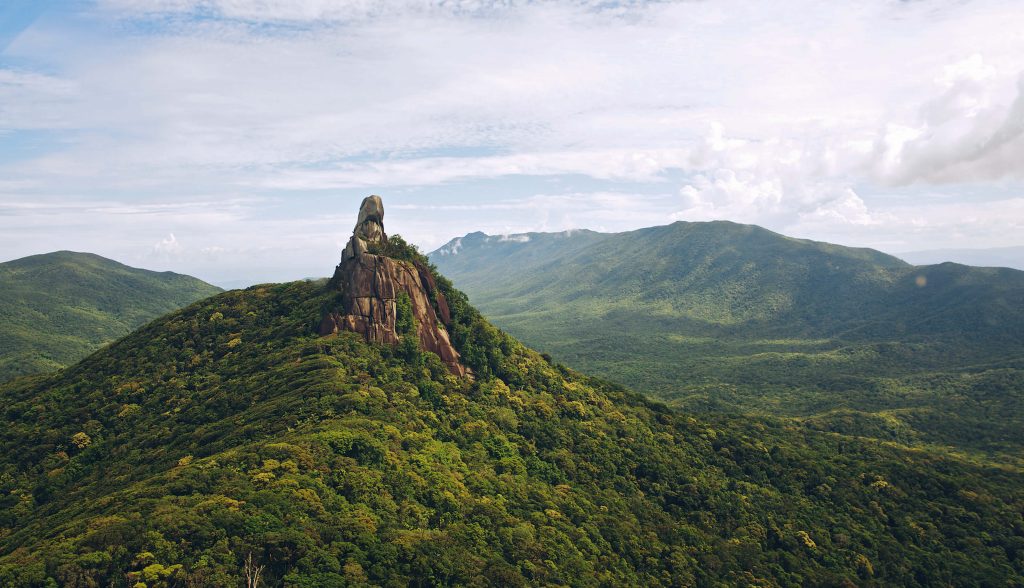
Mount Pieter Botte, part of the Great Dividing Range
Mount Pieter Botte, part of the Great Dividing Range
The Wet Tropics Rainforest still had one remaining challenge of survival. The big journey may have been over, but the earth’s climate continued to push and pull in a wave-like motion; heating up and drying out, cooling down and getting wet with sea levels also moving up and down. Our rainforests and everything in them still needed a place to hide.
It’s at this point that a chance collision with the tectonic plates that Hawaii and parts of New Zealand are attached to about 100 millions of years earlier paid off. The slamming together of tectonic plates caused a twisting and mashing of earth creating what we today know as The Great Dividing Range.
We’ve a lot more than Pavlova to thank our Kiwi neighbours for because it turns out the Great Dividing Range acted as the perfect biological bomb shelter for fragile species, providing a safe place to hide out and survive during these natural changes to Australia’s climate.
Even with a hide-out, as climate change continued to heat and cool the planet it acted as a sort and filter mechanism. It’s Mother Nature’s way of sorting out species, kind of like how we pick a good deal on a travel website. You start with a whole lot of stuff and gradually adjust and filter until you end up with just a few surviving good options.
As the oceans rose, the rainforest became the sea, and it was the nutrient rich stones and soils eroding off the Wet Tropics Rainforest that gave birth to the Great Barrier Reef. It’s hard to imagine but the continental shelf on the outer Barrier Reef was once above water and the channels that run around the bommies and walls of today’s reef systems were once rivers lined with rainforest. To call it a place where two world heritage areas collide is an understatement.
Today
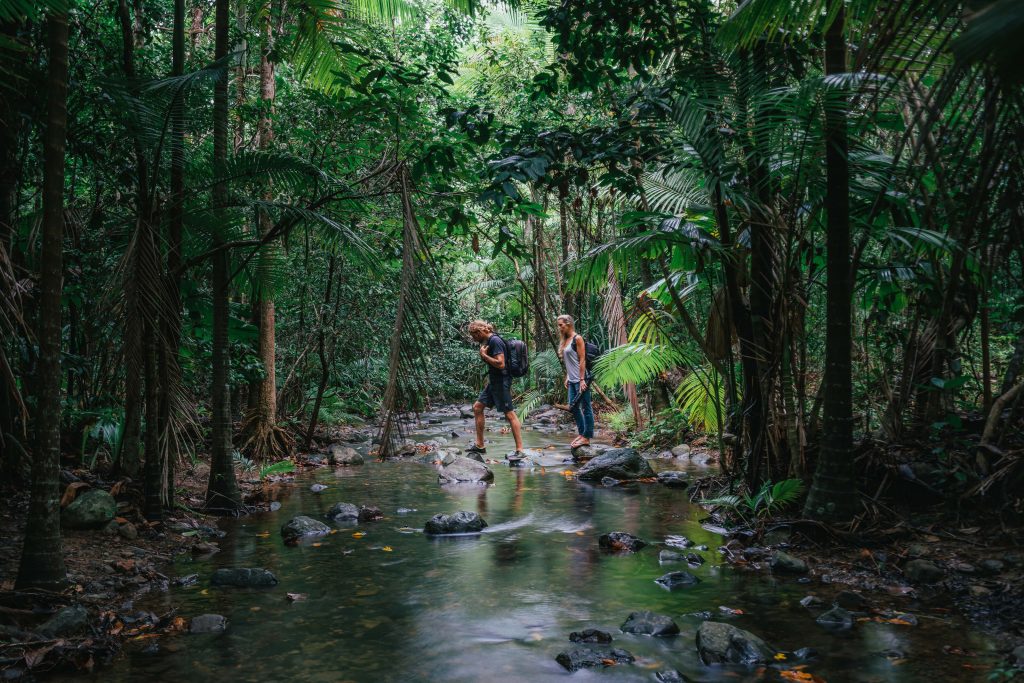
Hiking through the Wet Tropics Rainforest
That brings us back to the present. Without just one part of this amazing story playing out as it did, it’s unlikely that we’d have such a unique window into an ancient world, which you can still experience today.
The Wet Tropics is the only place on the planet where you’ll find the world’s smallest and tallest cycads living alongside the world’s most diverse assemblage of ancient and relict flowering plants.. A haven for Australia’s greatest number of animal species in one place, 80 of which can’t be found anywhere else on the planet.
The Wet Tropics is a living natural wonder, allowed to survive solely upon the miracle of circumstances. At 300 million plus years in the making, it’s still evolving; and you can see, experience and become immersed in the wonder of the rainforests of the wet tropics today right here in Tropical North Queensland.

